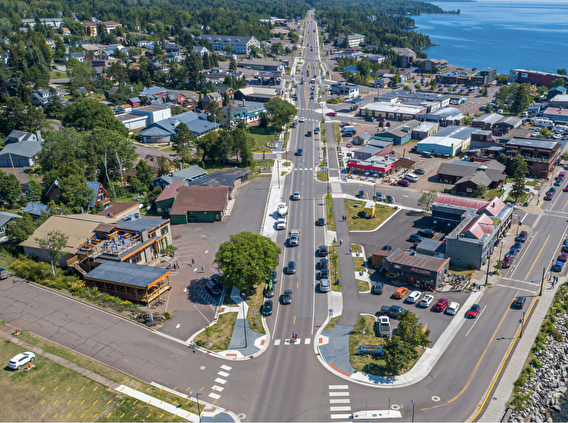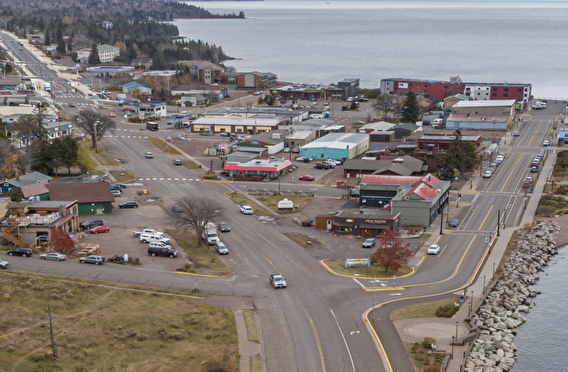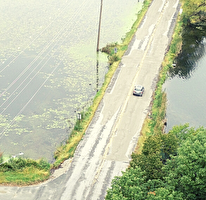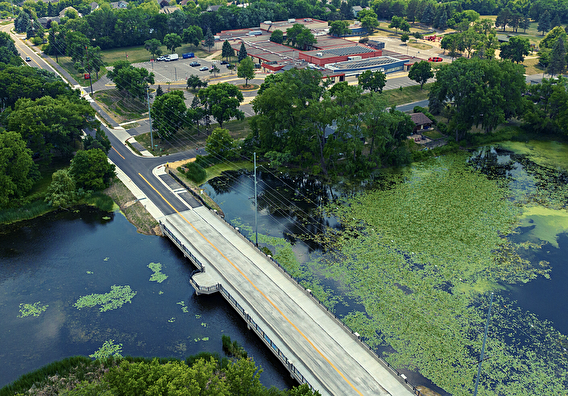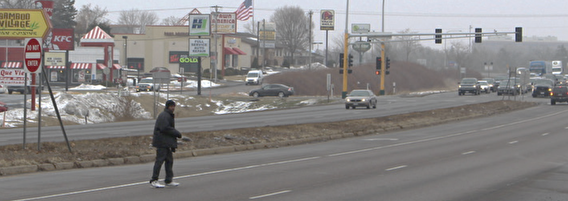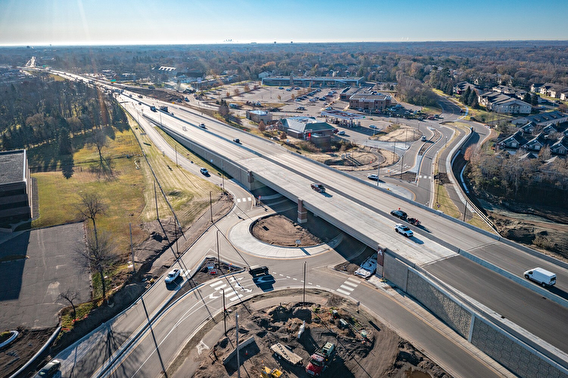Congratulations to the 2023 Project of the Year recipients honored by the Minnesota County Engineers Association (MCEA), American Public Works Association – Minnesota Chapter (APWA–MN), and City Engineers Association of Minnesota (CEAM). Please see the association websites for details and a full list of awards. The highlights below are edited from project submission forms.
MCEA Project of the Year: CSAH 49, Steele County
This project reconstructed CSAH 49 from a gravel road to a paved road on a new alignment meeting current State Aid standards. CSAH 49 had been a gravel township road through an area of active aggregate and sand mining. The road had a varied history and had been moved at least once to accommodate mining. Based on recommendations in its 2025 Transportation Plan, Steele County took jurisdiction of the route in 2008 and designated it as CSAH 49. In this project, the southern portion of the old road alignment was converted to a dead-end road that will service industrial businesses, and it will be turned back to Medford Township. Turn lanes were constructed at the CSAH 49 intersection of the new dead-end road to accommodate the heavy truck volumes servicing the industries along that road.
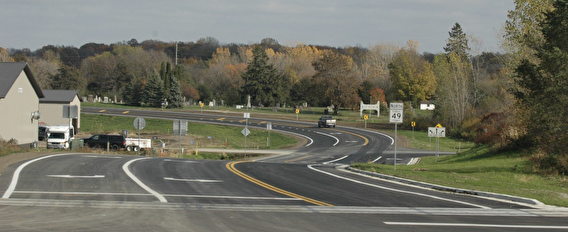
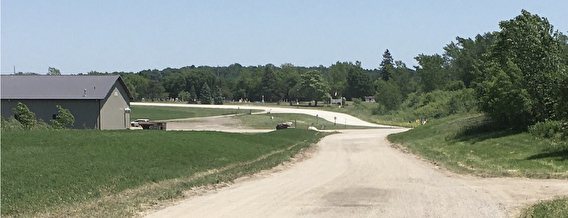
APWA–MN Project of the Year – Outstate: TH 61 Reconstruction, City of Grand Marais
This comprehensive, 11.3-mile-long project included TH 61’s reconstruction and preservation through the downtown core of the 2.9-square-mile city. It notably included a 3/4-mile conversion of rural commercial corridor to urban design, including new storm sewer and new ADA-compliant pedestrian and bike facilities. The urban conversion used pedestrian bump-outs, narrowed driving lanes, and shoulders to slow traffic. It also improved access control by consolidating roadway connections and establishing standard entrances in lieu of less formalized connections. The project included extensive ADA design, utility coordination and relocations, and storm sewer design with permanent stormwater treatment within the narrow right-of-way.
